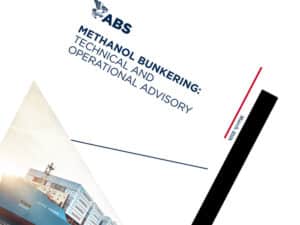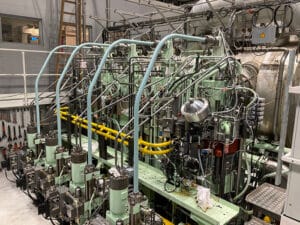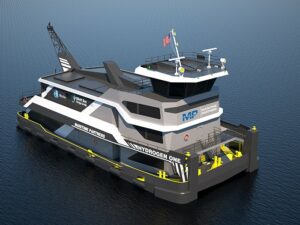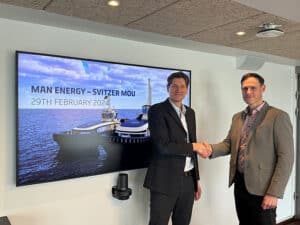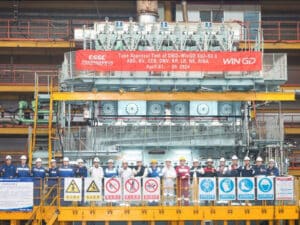
Q&A: Navtek talks tug market technologies
Written by Heather Ervin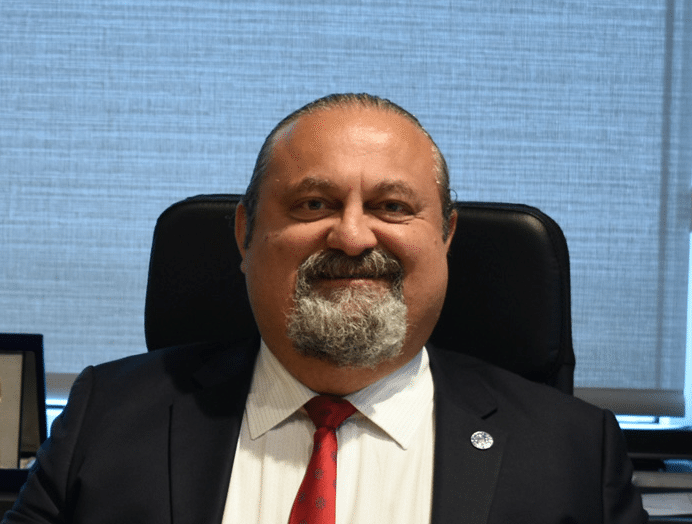
Ferhat Acuner, general manager of Navtek Naval Technologies, will present on a tug and towboat technology panel at TTB 2022. (Credit: Navtek)
One of four panelists on the TTB 2022 topic of “How Technology is Shaping the Future of Tugs and Towboats,” Istanbul-native Ferhat Acuner, general manager of Navtek Naval Technologies Inc., has 33 years of marine engineering experience.
Before joining Navtek Naval Technologies, he served in the fields of management and project developments of distinguished companies of shipbuilding, naval design, ship operations and ship repair.
He has also held in senior positions at unique project developments, Powership®, Karadeniz Holding A.Ş., is the name given to a barge/ship mounted fully integrated floating power plants.
Throughout many years of experience and knowledge, Acuner develops and focuses on the importance of innovative ideas and technologies for a greener future.
Marine Log (ML): In your experience, how is technology shaping the future of vessel design—especially in the tug market?
The future of ship design shall be obviously shaped by the energy source. The environmental sensibility turns into solid and compelling international rules and regulations to reduce all kind of pollutant emissions, so energy sources for propulsion are changing from fossil fuels to new ones like hydrogen, batteries and similar zero-emission technologies.
These new technologies come with their logistic needs as well. The design parameters now must include those. The tug market, especially harbor tugs are the first ship type to be affected due to several reasons: they are operating within the city limits and are therefore more sensitive for the emissions, they have limited range and therefore easier to solve the possible problems like refueling and recharging, and energy logistics.
ML: What can you tell us about your line of ZEETUG (zero-emission electric tugboats)? (size, propulsion, construction phase, etc.)
ZEETUG project is the only proven rechargeable harbor tugboat project in the world. Almost two years, the first ZEETUG has been in operation successfully and she is continuing.
The project started in 2018 with a request from the tuggage and pilotage company GİSAŞ for an eco-friendly design solution within their tugboat fleet renewal plan. First, we had to determine the propulsion system of the project to draw the path of the research and development.
ML: Which one is more convenient? Diesel, hybrid, LNG or all-electric propulsion system?
Diesel was not the ecological solution. LNG system was not fitting into a smaller tugboat, thus this solution was also eliminated.
Hybrid was only 50% reducing the emission, our goal was to achieve up to 70%. Our decision was to go for a fully electric propulsion system due to meeting the criteria. Efficiency was one of the most important factors affecting the increase or decrease of the required battery capacity.
The energy concept drove us to statistical studies focusing on existing similar tugboats’ operations.
We analyzed the required total energy amount for a pre-determined operation period, and the total energy requirement was less than what we predicted. This result clearly showed that a fully battery-powered electric tugboat was achievable.
Our engineering studies led to us developing a new concept design for tugboats, the ZEETUG.
After thousands of man-hours, dozens of arrangement updates and changes, we found the optimum design solution.
In this first project, all components were developed, designed, and manufactured by NAVTEK in line with our clients’ needs and requests.
Meanwhile, we also were developing a fast-charging station. As we named as Quick Charge Station (QCS), which is capable of fully charging a ZEETUG30 within one hour, also has been custom developed and manufactured for Tuzla Bay Infrastructure, Gisaş Pier- Turkey.
The QCS provides the required electrical power by converting AC to DC in essential system voltage and current. Due to the need for high current capacity and cable sizing, a cable-handling crane with a cable storage drum has been designed. STEMS (Smart Tug Energy Management System) was initially developed for ZEETUG but is now used for any battery-powered vessel.
After this successful operating period, we have published the status report and the report clearly indicates that the project is successful and zero emissions operations of harbor tugboats are possible from now on.
Today, three more ZEETUGs are under construction. In line with the experience gained through our good prototype ZEETUG 30. They are two of ZEETUG 30 as sisterships of the first one and one ZEETUG 45, 45 tons Bollard Pull ASD propulsion tug.
In addition, we continue to study the charging of the batteries while free-spinning the propeller. As well as, today we are focused on developing a great combination of all-electric and hydrogen Fuel Cell system, the target is the same: zero emissions operations. Within 2022, we plan to announce our first Hydrogen FC combined rechargeable full electric tugboat.
ML: How likely are your battery-powered tugs to start up operations in the United States? What about hydrogen-powered tugs?
We have been introducing ZEETUG technology in the U.S. market since 2018, not yet we have had a contract. Due to the Jones Act, we cannot export the final product but we need to have partners here in the U.S., we have several contacts and hope to start the first U.S. ZEETUG project within 2022.
ML: Do you have experience working with American shipyards or naval architects on these projects? If so, can you tell us more about that?
Unfortunately, we have not had such an experience yet but we are working on it, we hope to have good cooperation to start ZEETUG projects’ construction in the U.S. within this year.
ML: In addition to tugs, NAVTEK works on numerous other vessel types. What are your most common ship concepts, and what technologies are you integrating into these vessels?
The last 10 years, we have focused on “greener technologies.” So we have different projects in hand other than ZEETUGs, as they all have common features: “less energy requirement, less or zero emissions, ready for remote and autonomous operations.”
For example, Combo Green: 10000 DWT ocean going bulk carrier having renewable energy sources onboard and operating with approx. 52% less fuel consumption, we are developing also river going full electric version of Combo Green. We also are working on Port Decarbonization projects: electrification of existing port facilities and finally providing zero emissions ports having their own renewable energy sources like solar PP and Wind PP.

